Hot Tour
To More Inquiry
Email:
| TOUR OPERATOR | Big Bike Tours & Golden Buffalo Rider – Moto Tours Japan |
| DEPARTURE/RETURN LOCATION | Tokyo, Japan / Narita or Haneda Airport |
| DEPARTURE TIME | The tour will start at 8.30 am the day after the arrival day. |
| RETURN TIME | The tour will finish after breakfast at the hotel on departure day. |
| GEAR | We recommend bringing your gear to be the most comfortable. BUT we also offer helmets, jackets, gloves, and knee guards (European high-quality brands in many different sizes). Please be informed, that we do not offer boots and trousers due to hygienic reasons. |
| INCLUDED | Motorcycles P4 class bikes (P5-P8 class bikes available with surcharge) with unlimited mileage. Some examples of bikes according to their class you will find in the INFO tab |
| Insurance for the driver, pillion, third parties, and their properties. (This covers only cases of permanent disability or death. For medical expenses please contract travel insurance in your home country.) | |
| 20 nights Accommodation (3-star hotels) as per hotels/guesthouses/homestays and room types specified in the itinerary | |
| 20 x Breakfast and 17 dinners including Welcome + Farewell Dinners | |
| Motorcycle Insurance/Registration/Maintenance/Licences/Preparation/Presentation | |
| Collision damage waiver (deductibles apply) | |
| ETC card (automatic electronic toll collection system) installed on all bikes and ETC card rental including all Highway toll fees | |
| Emergency road assistance by the Japanese Automobile Federation | |
| Smartphone holder and USB power socket | |
| Experienced motorcycle mechanic accompanies the tour with a service vehicle for luggage, spare parts, and repair tools | |
| Japan-experienced and multilingual-speaking “road captain” as a riding tour guide during the whole tour | |
| Itinerary Design by our experts to provide you with an unsurpassed, unique experience, incorporating our secrets and off-the-tourist-track routes | |
| General Admin Fees: Merchant Services Fees, Government Goods Services Tax (15%), Hotel service charge & room tax, and baggage handling | |
| Top cases for the motorcycles | |
| Route map | |
| Multilingual support on the phone from our head office and our network of more than 140 rental stations all over the country | |
| NOT INCLUDED | Airport pick up and drop off |
| All services not mentioned as included and all items of a personal nature | |
| Gas | |
| Lunches | |
| Pannier cases (they are available as extra options for some of the motorcycle models) | |
| Alcoholic beverages and meals not specified in the itinerary | |
| Travel insurance (cover against cancellation costs, medical expenses, including repatriation, in the event of accident or illness). We highly recommend you arrange appropriate insurance in your home country | |
| Flights to and from Japan | |
| Tips for guide and driver | |
| Single-room supplement | |
| Personal expenses such as snacks, beverages, laundry, telephone calls, etc. | |
| Additional activities or services or any other expenses not listed as “included.” | |
| Official Japanese translation of the driver’s license at the Japanese Automobile Federation for those countries that need it = 5,800 yen/pax (50 US$/pax) | |
| Entrance fees to sights and activities specified in the itinerary. They usually range from 300 yen to 1,000 yen (3 to 9 US$) | |
| Visa fee for Japan |
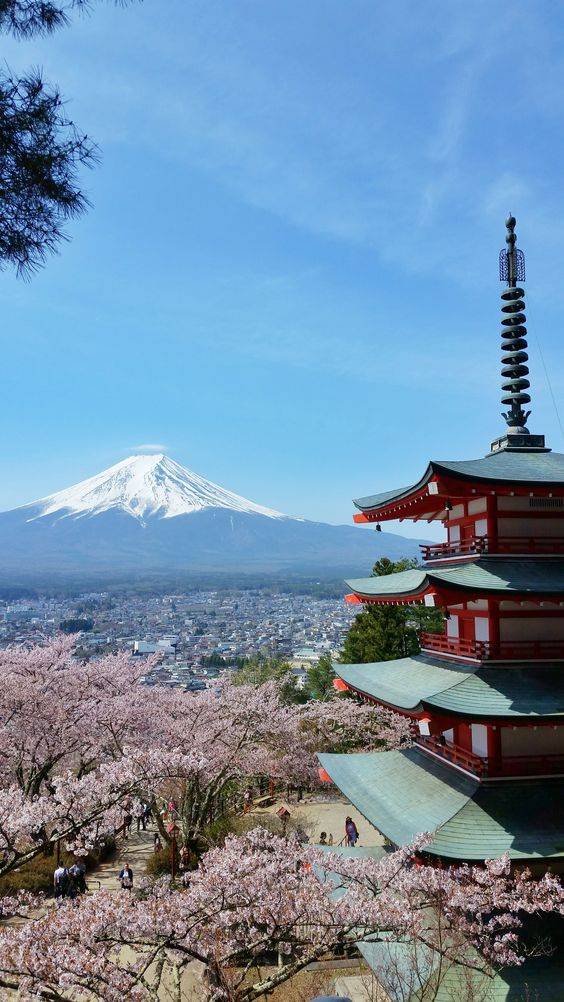
Arrive in the capital of the country, previously known as “Edo” before 1868. Since then it has grown to one of the world’s most populous cities. With the Meiji restoration, the emperor and capital moved from Kyoto to Edo, which was renamed “Tokyo” (Eastern capital). Today, Tokyo offers an unlimited choice of shopping, entertainment, and culture.

We start the day riding through the elevated highways of Tokyo, south to Yokohama Bay, crossing it through the suspension bridges. Then continue towards the Izu peninsula to ride the Hakone Turnpike, one of the most famous roads in the country. At the top, we will have lunch with some breathtaking views of Mount Fuji. Then we will ride winding roads alongside Mount Fuji through Yamanako Lake and arrive at Kawaguchi Lake where we will stay for the night.
After breakfast, we will ride along the southern Japanese Alps into the Kiso Valley in Nagano prefecture. An ancient 70 km trade route called the “Kisoji” was developed along the valley and served as a very important means of commerce in the area. The “Kisoji” became even more important when it was combined with other routes in the formation of the 500km long “Nakasendo” (pass through mountains), which was one of the only two means of transportation routes between Edo and Kyoto. Along the Kiso valley, we will visit the post town of Tsumago, which has been preserved to look the same as when it served travelers of the “Nakasendo”, hundreds of years ago. After this trip back in time, we will arrive at the hot spring town of Gero, where the soothing waters of the hot springs will get us relaxed before dinner.
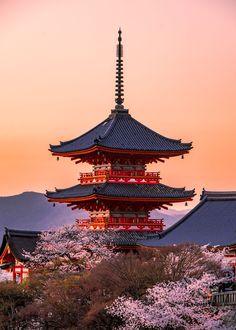
Today we will leave Gero, riding through the twisty mountain roads of Gifu until we reach the town of Seki. Here we will visit the town’s famous swordsmith museum, where we will learn about the art of forging Japanese swords (“katanas”), in the traditional forging style that has been passed down for centuries. After we will continue riding to Kyoto, passing by Hikone Castle and Lake Biwa, Japan’s largest freshwater lake.
Today we will have the day free to explore Kyoto, which served as Japan’s capital and the emperor’s residence from 794 until 1,868. Over the centuries, Kyoto was destroyed by many wars and fires, but due to its exceptional historic value, the city was dropped from the list of target cities for the atomic bomb and escaped destruction during World War II. Countless temples, shrines, and other historically priceless structures survive in the city today.
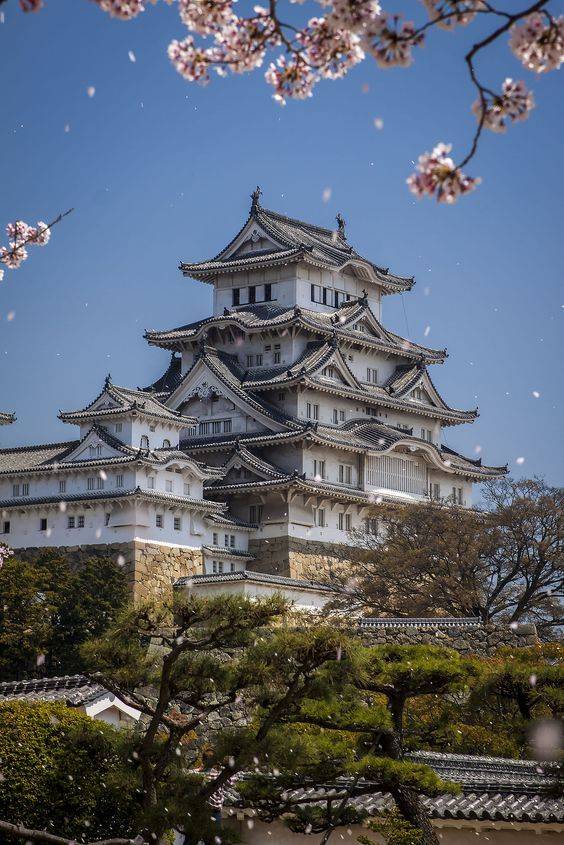
Today we will cross from Kyoto prefecture to Hyogo prefecture. The highlight of the day is the visit to Himeji Castle. Also known as White Heron Castle (Shirasagijo) due to its elegant, white appearance, is widely considered as Japan’s most spectacular castle for its imposing size and beauty and its well-preserved, complex castle grounds. The castle is both a national treasure and a world heritage site. Unlike many other Japanese castles, it was never destroyed by war, earthquake, or fire and survives to this day as one of the country’s twelve original castles.
After breakfast, we will ride to Kurashiki, a small town in Okayama prefecture that has a preserved canal area that dates back to the Edo period (1,603-1,867), when the city served as an important rice distribution center. The name “Kurashiki” can be roughly translated as “town of storehouses” about the rice storehouses. Many of Kurashiki’s former storehouses have been converted into museums, boutiques, and cafes. After lunch, we will continue riding to Hiroshima where we will stay for the night. (Laundry service possible)
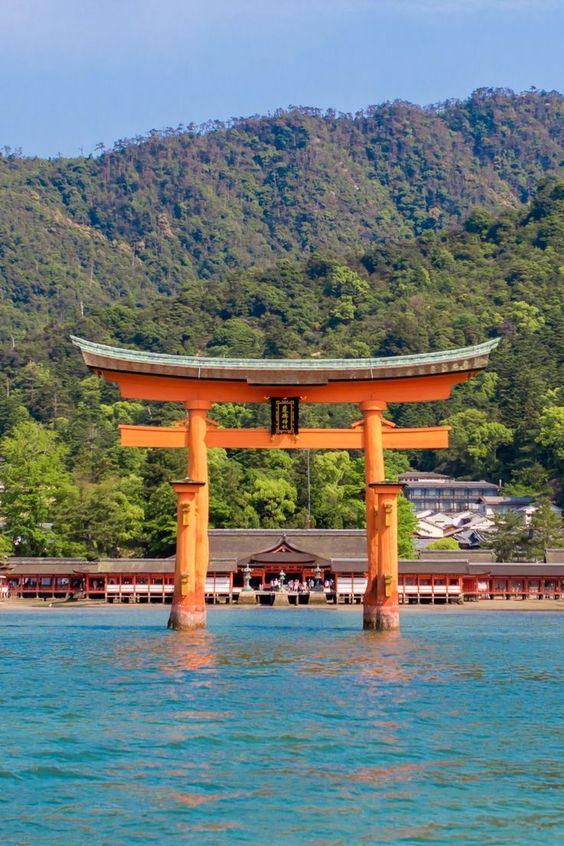
Hiroshima is the principal city of the Chugoku Region and home to over a million inhabitants. When the first atomic bomb was dropped on Hiroshima on August 6, 1945, the city became known worldwide for this unenviable distinction. The destructive power of the bomb was tremendous and obliterated nearly everything within a two-kilometer radius. After the war, great efforts were made to rebuild the city. In the center of the city, a large park was built and given a name that would reflect the aspirations of the re-born city: Peace Memorial Park.
After breakfast, we will leave Hiroshima through the winding countryside roads of Yamaguchi, the westernmost prefecture of the main Honshu island, and cross to Kyushu, Japan’s third-largest island, famous for its hot springs, active volcanoes, lush greenery, relaxed lifestyle, and friendly people.
After lunch, we will ride through Fukuoka and Oita prefectures. After lunch, we will visit a very interesting local motorcycle collection with several collector pieces and a huge assortment of memorabilia from the 20th century. Later we will continue to Beppu, one of Japan’s most famous hot spring resorts, producing more hot spring water than any other resort in the country. Beppu offers an unmatched range of baths to be enjoyed, including ordinary hot water baths, mud baths, sand baths, and steam baths. In addition, the Hells of Beppu has several spectacular hot springs for viewing rather than bathing.
Today we will cross Kyushu from east to west, stopping on the way at the Aso Kuju National Park and riding the famous scenic Milk Road. Imagine you are on a road that leads off into the sky, and we will be stopping at different lookouts for some incredible views and pictures. Later we will continue to Kumamoto, the capital city of the prefecture, famous for its castle.
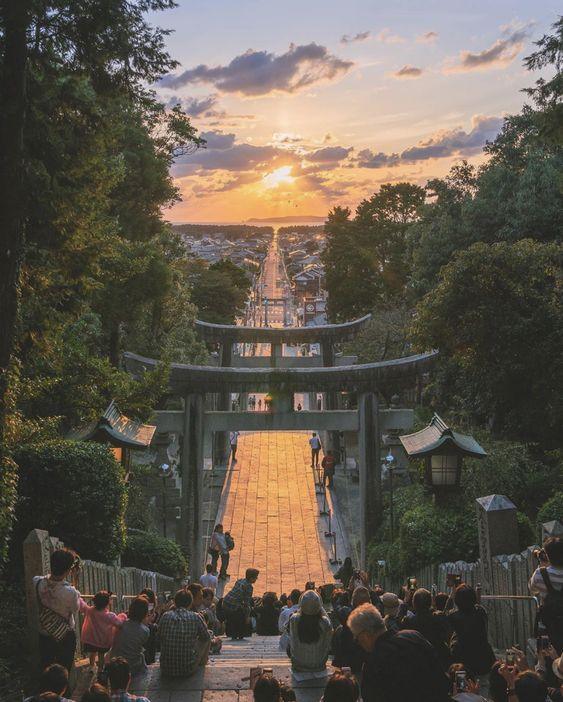
After breakfast, we will leave Kumamoto heading north into Saga prefecture and arriving at Fukuoka. Fukuoka is Kyushu’s largest and one of Japan’s ten most populated cities. Because of its closeness to the Asian mainland (closer to Seoul than to Tokyo), Fukuoka has been an important harbor city for many centuries and was chosen by the Mongol invasion forces as their landing point in the 13th century. Today’s Fukuoka is the product of the fusion of two cities in the year 1889 when the port city of Hakata and the former castle town of Fukuoka were united into one city called Fukuoka. Hakata remains the name of one of Fukuoka’s central districts and the main railway station.
Today we are crossing back to the main island, into the unspoiled forested mountains of Yamaguchi prefecture, and riding along the coast of the Sea of Japan. We will reach Masuda town for the night. Masuda is the capital of the former Iwami prefecture and has a strong cultural legacy apparent in the town’s landmarks and activities, both ancient and modern.
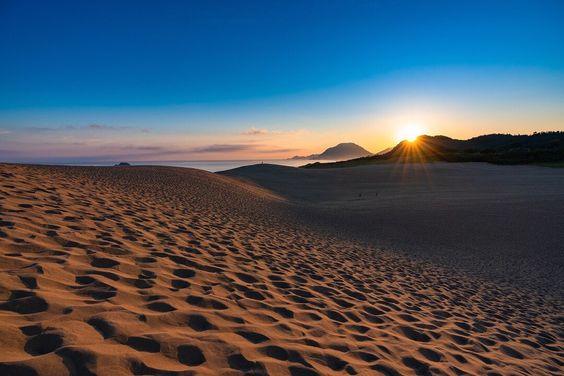
After breakfast, we will ride along the coast to Izumo. Here we will visit the Izumo Grand Temple, one of the most important ones in Japan, and considered the oldest one, being mentioned in chronicles from the 700s. The main deity (kami) enshrined at Izumo Taisha is Okuninushi no Okami. According to the creation myths, Okuninushi was the creator of the land of Japan and the ruler of Izumo. He also became known as the deity of good relationships and marriage. Visitors consequently clap their hands four times instead of the usual two times during their prayers: twice for themselves and twice for their actual or desired partners. After Izumo, we will continue riding winding roads to Tottori, the capital of Tottori prefecture and famous for its dunes, the largest in Japan, covering 30 square kilometers.
Today we will ride through Hyogo prefecture and will visit Amanohashidate. It is a pine-covered sandbar that spans the mouth of Miyazu Bay in the scenic, coastal region of northern Kyoto Prefecture. Viewed from the mountains at either end of the bay, the Amanohashidate Sandbar (which roughly translates to “bridge in heaven”) looks like a pathway between heaven and earth. The scene has been admired for centuries and is ranked among Japan’s three most scenic views. After this, we will ride the beautiful scenic road of the Mikata five lakes taking a break at the top, before continuing to Fukui for the night.
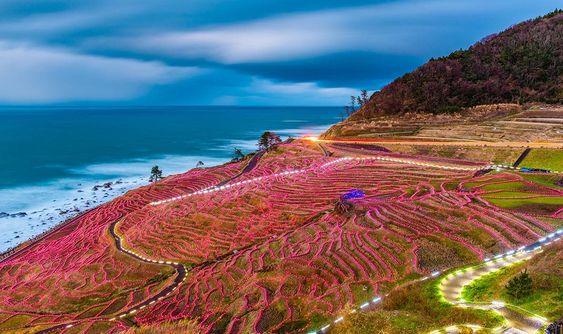
Today we will visit Eiheiji, a massive temple complex that consists of over 70 buildings and structures, founded in 1,244 by Dogen, the Buddhist scholar who introduced Zen from China to Japan in 1,228. Also called “The Temple of Eternal Peace”, it is located deep in the mountains and one can imagine how people looking to reach enlightenment through meditation can concentrate fully in this beautiful natural environment. Later we will continue riding north on the mountain roads of Ishikawa prefecture, all the way to the Noto Peninsula.
After breakfast, we will ride west to visit the fish market of the coastal town of Himi. From there we will continue south through the winding countryside roads of Toyama prefecture until we reach the World Heritage Site of Shirakawago deep into the mountains. Here we will visit the old traditional “Gassho-zukuri” farmhouses. Their steep thatched roofs resemble the hands of Buddhist monks pressed together in prayer and are designed to withstand the large amounts of heavy snow that fall in the region during winter. Later, we will continue west until we reach the Hot Springs town of Hirayu, where we will stay for the night.
Today we will cross the northern Japanese Alps to reach Matsumoto town. Matsumoto is famous for its castle, one of the most beautiful and original castles in the country. The castle structures, in combination with their characteristic black wainscoting, give off an air of grandeur and poise. Later we will continue riding to reach Kusatsu Hot Springs, one of Japan’s most famous hot spring resorts that is blessed with large volumes of high-quality hot spring water said to cure every illness but lovesickness.
Today we will start the day riding the famous roads that lead to Haruna Mountain where we will stop for a coffee while enjoying the views of the lake at the top. Then we will continue riding to Mount Akagi where we will have lunch and visit a super special temple located on an island, inside a lake that is inside a volcano. Later we will ride the beautiful Japan romantic road through the Konsei mountain pass, into Chuzenji Lake and Nikko, famous for its world heritage temple complex.

Today we will head back to Tokyo, through cedar tree avenue, a total of 35km sided by these trees forming a monumental approach to the shrines and temples of Nikko. is listed in the Guinness Book of World Records as the longest tree-lined avenue in the world, and is the only cultural property designated by the Japanese Government as both a Special Historic Site and a Special Natural Monument. Later we will pass by the famous MotoGP Motegi circuit, and visit the Honda Collection Hall museum before heading back to Tokyo.
Breakfast at the hotel. Transfer to the Airport (International Terminal) or stay and explore Tokyo and the surrounding area.
Reserve your ideal trip early for a hassle-free trip; secure comfort and convenience!
